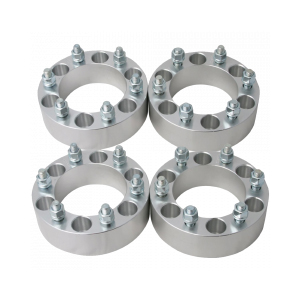Choosing the Right Liquid Gasket for Your Oil Pan Installation
Understanding Liquid Gaskets for Oil Pans A Comprehensive Guide
Liquid gaskets have become a popular choice in automotive repair and manufacturing due to their exceptional sealing capabilities. Specifically, when it comes to oil pans, selecting the correct sealing material is crucial for the longevity and performance of the engine. This article will delve into what liquid gaskets are, their benefits, application techniques, and considerations specifically tailored to oil pan assemblies.
What is a Liquid Gasket?
A liquid gasket, often referred to as gasket maker or sealant, is a type of adhesive material that cures to form a solid, durable seal. Unlike traditional gaskets that are pre-cut and must be installed correctly to avoid leaks, liquid gaskets offer flexibility and can be generated on-site. They are typically made from silicons, RTV (Room Temperature Vulcanizing) compounds, or anaerobic adhesives. The capability to fill in any imperfections in the surface of the oil pan and the engine block makes liquid gaskets particularly advantageous.
Why Use Liquid Gaskets for Oil Pans?
1. Versatility Liquid gaskets can be used on various types of materials, including aluminum, steel, and plastic, making them ideal for oil pans found in different engine types.
2. Custom Fit Since they can be applied in any shape or thickness, liquid gaskets ensure a perfect fit even in areas with complex geometries, unlike traditional gaskets that may not conform seamlessly.
3. Resistance to Chemicals Many liquid gasket formulas are resistant to oil, fuel, and other automotive fluids, making them suitable for creating a long-lasting seal around oil pans.
4. Temperature Tolerance Liquid gaskets can withstand significant temperature variations that occur in an engine, ensuring that the seal remains intact even under stress.
5. Ease of Application Liquid gaskets are simple to apply and do not require specialized tools, making them accessible for both professional mechanics and DIY enthusiasts.
How to Apply Liquid Gaskets to an Oil Pan
Applying a liquid gasket requires some degree of preparation and technique to ensure an effective seal
. Here’s how to do itliquid gasket for oil pan

1. Surface Preparation Clean both surfaces—the engine block and the oil pan—thoroughly. Remove any old gasket material, dirt, or oil, and ensure the surfaces are dry.
2. Determine the Right Product Choose a high-quality liquid gasket suitable for oil contact and temperature ranges indicated in your vehicle's specifications.
3. Application - Shake the tube of liquid gasket thoroughly before use. - Apply a continuous bead of gasket maker around the perimeter of the oil pan mating surface. Maintain an even thickness to prevent gaps. - For irregular surfaces, ensure that the bead fills any crevices adequately.
4. Join Surfaces Carefully align the oil pan to the engine block and press down gently to compress the gasket material evenly. Avoid gluing the oil pan to the block excessively or misaligning it.
5. Curing Time Consult the manufacturer's instructions regarding the curing time. Generally, it's recommended to allow the gasket to cure for at least 24 hours before starting the engine to ensure a proper seal.
6. Reassembly If necessary, reattach any bolts or screws to secure the oil pan. Make sure to follow the manufacturer's torque specifications to avoid warping the pan or damaging the seal.
Considerations and Tips
- Temperature and Humidity Ambient conditions can affect the curing process. Ensure that the area is well-ventilated and that the temperature is within the manufacturer's recommended limits.
- Avoid Overapplication Using too much liquid gasket can lead to excessive oozing, potentially causing blockage in oil passages.
- Check for Leaks After reinstallation and curing, run the engine and inspect for leaks. If you notice any, it's best to address them sooner rather than later to prevent major engine damage.
Conclusion
Liquid gaskets are a game-changer in automotive sealing technology, particularly for oil pan applications. They provide flexibility, durability, and ease of use, making them a favored solution among mechanics and DIYers. By following the correct application techniques and carefully selecting the right product for the job, you can ensure a tight, reliable seal, thus extending the life of your engine components.
-
Simplifying Oil Changes: A Comprehensive Guide to Oil Drain Plugs and Their Variants
News Aug.04,2025
-
Mastering Oil Drain Maintenance: Solutions for Stripped, Worn, and Upgraded Oil Plugs
News Aug.04,2025
-
Fixing Oil Pan Plug Issues: Leaks, Stripped Nuts, and the Right Replacement Solutions
News Aug.04,2025
-
Everything You Need to Know About Oil Drain Plugs: Sizes, Fixes, and Upgrades
News Aug.04,2025
-
Choosing the Right Oil Drain Plug: A Guide to Sizes, Materials, and Drain Innovations
News Aug.04,2025
-
A Complete Guide to Automotive Drain Plugs: Types, Problems, and Innovative Solutions
News Aug.04,2025
-
The Ultimate Guide to Car Repair Kits: Tools and Essentials Every Driver Should Own
News Aug.01,2025
Products categories















